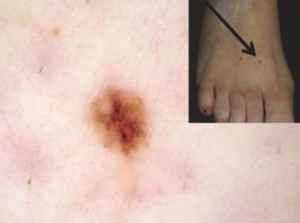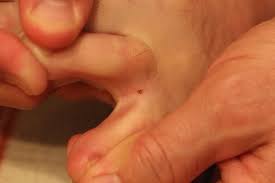A woman had a tiny melanoma removed; five years later she was terminal.
Why does this happen? Melanoma is stealthy and unforgiving.
Melanoma is a skin cancer, and about one-third of these tumors begin growing within a common mole.
The other two-thirds arise in non-mole areas of the skin – and no area is immune, including areas that never see the sun.
Natalie Fornasier was only 28 when she was given a terminal diagnosis of cancer, which began as a tiny melanoma that had been discovered on her toe when she was just 20.
How can something so small – seemingly caught in a very early stage – end up killing a young adult?
“The term ‘terminal cancer’ generally refers to cancer that has spread to other parts of the body and is no longer treatable with curative measures,” says Cameron K. Rokhsar, MD, a double board-certified dermatologist and owner of New York Cosmetic, Skin & Laser Surgery Center.
“While a very small melanoma may not appear to be concerning, it is still important to have it evaluated by a dermatologist and promptly treated,” continues Dr. Rokhsar.
Size Doesn’t Matter
“A tiny melanoma can be aggressive and spread quickly, particularly if it is not caught early,” says Dr. Rokhsar.
“If the melanoma has spread to other parts of the body, such as the lymph nodes, liver, lungs, brain or bones, it may be considered advanced or metastatic melanoma, which can be a terminal condition.”
When cancer has spread to distant sites (and “distant” doesn’t necessarily mean far from the primary tumor; the spread could be nearby but just as deadly as if it were a limb-length away), it’s also known as stage IV disease.
Dr. Rokhsar explains, “Several factors can contribute to the development of metastatic melanoma, including the thickness or depth of the original melanoma, the presence of ulceration or bleeding, the location on the body, and the individual’s age, overall health and immune system.”

What’s predictive of the likelihood of a melanoma spreading, or, to put another way, what the five-year survival rate or prognosis is – is the depth of the spot, not its surface diameter or width.
A melanoma may be seven millimeters in diameter yet still confined to the top-most layer of the skin, the epidermis. This stage has a good prognosis.
However, a two millimeter in diameter tumor may have already penetrated into the second layer of skin, the dermis.
This means that the prognosis isn’t as good as is with an epidermis-confined, or in situ, melanoma.
There are different types of melanoma.
In short, if you spot a suspicious mole or a new odd spot, NEVER blow it off just because it’s “so very small” or tiny.
“When melanoma is diagnosed early, the prognosis is usually excellent, with a high likelihood of a cure,” continues Dr. Rokhsar.
Stage 0 or in situ melanoma has a 10 year survival rate of 99 percent.
“However, even when melanoma is removed completely, there is a risk of recurrence or spread to other parts of the body.
“This is because there could be microsatellites dormant in the lymph nodes at the time of diagnosis.”
These are micro-metastases, undetected during the initial treatment of what appears to be a very early stage, small and flat malignant lesion.
Several years later, the cancer “comes back.” With that lapse of “all clear” time, it will seem as though the disease has come back or “returned.”
But all along, the micro-metastases have been dormant and then, at some point, began proliferating.
Or, they were proliferating all along and may even have spread to the lymph system, where it was then transported to a lung.
A cluster of melanoma cells that’s too small to be detected at the time of the diagnosis of that tiny “mole” may take several years to grow big enough to cause symptoms and show up on a chest X-ray.
Think of it this way: If you double a penny every day, it takes eight days just to get to one dollar.
But keep doubling it, and after 30 days you’ll have $5,368,709.12.
Similarly, the growth of cancer cells is exponential.
Summary
• Size doesn’t matter. A tiny melanoma can be deadly.
• If you find a suspicious mole (it’s changing color, shape, getting bigger or developing a crustiness), do NOT dismiss it based on its small size.
• Though melanoma can develop in areas that are never exposed to the sun, this does not mean that you shouldn’t take sun exposure seriously. Wear sunblock when outdoors, even on cloudy days.
• People with dark skin are not immune to melanoma.


 At New York Cosmetic, Skin, and Laser Surgery Center
At New York Cosmetic, Skin, and Laser Surgery Center























